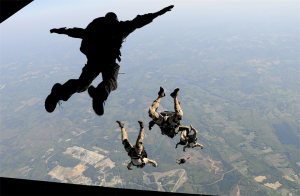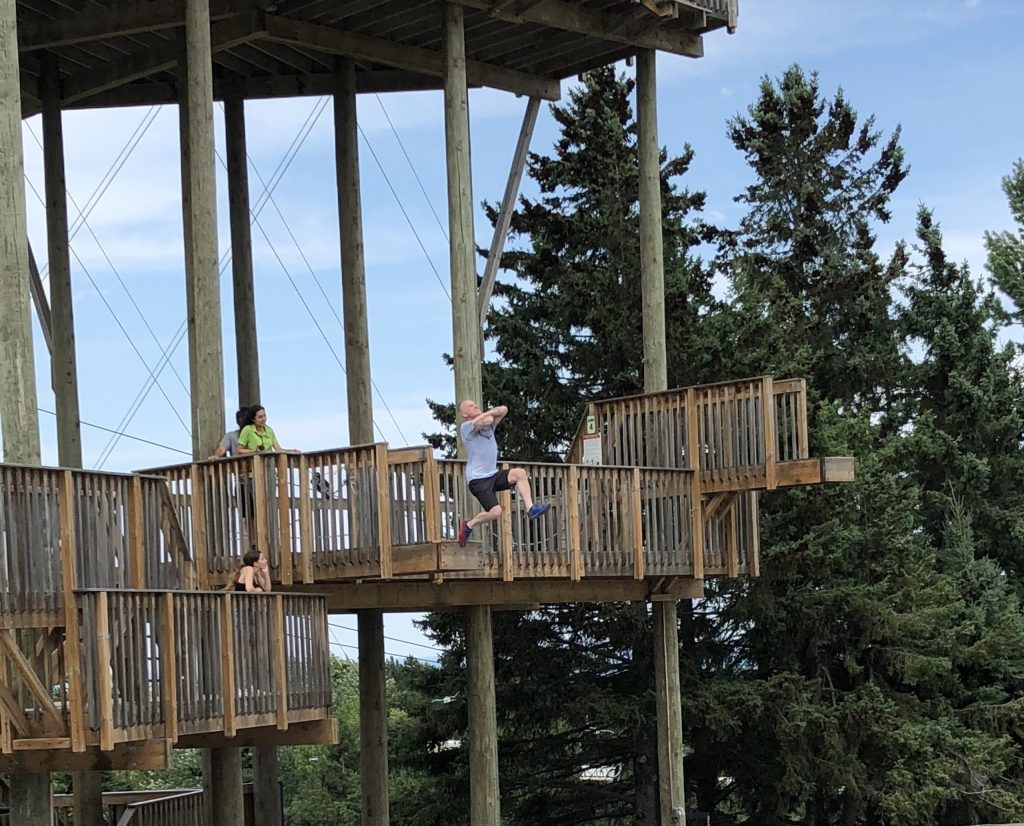I haven’t been too active lately on TMW, due to some personal issues, which included my own illness, as well as the illness of my beloved dog of nine years, Lemon. Many on here know Lemon from mentions in articles to posts in social media. She was the love of my life and the closest I have ever had to having children of my own.

Lemon was diagnosed with terminal cancer, osteosarcoma (bone cancer), which made her incredibly dependent upon me physically, and ultimately she lost her battle with this terrible disease this past week, … on July 15, 2018.
It was absolutely crushing for me, and I was/am devastated. My home instantly became a very lonely place, with everything reminding me of her. I decided to get away, out of the city, for a bit.
A couple hours north of the city is a ski resort called Blue Mountain. Though it’s the middle of summer they do offer great activities, and the scenery is beautiful.
There are many excursions you can do there, but one in particular caught my eye. The Apex Bagjump. Working your way up to the height of 6.5 metres (21 ft), you free fall onto an airbag, much the same as a stunt person in movies.
This appealed to me because I have never had the sensation of jumping from real height. Not learning to swim as a child I never jumped or free-fallen from any real distance. This was a way to experience that.
 I have been bit of a thrill seeker and thrive on adrenaline for most of my life. Beginning as a young child motocross racing. So I thought this was going to give me bit of a rush and thrill, and a little fun. I was in for a big surprise. It became a life lesson.
I have been bit of a thrill seeker and thrive on adrenaline for most of my life. Beginning as a young child motocross racing. So I thought this was going to give me bit of a rush and thrill, and a little fun. I was in for a big surprise. It became a life lesson.
Once I acceded to the first level, of four, I quickly realized things look a lot different from above.
Firstly, when looking down from the platform, its appear a lot higher then they do from the ground. Which in and of itself can be a little nerve wrecking, but I’ve never had a real issue with heights.
Secondly however came the game changer. You had to jump, cross your arms over your chest, swing your legs up, and land on your back. Essentially you free-fall backwards, eyes to the sky, to land on your back.
Reading that may not sound like much, but when you’re up there and looking down, knowing you have to jump “blindly” into the air and land on your back goes against every natural instinct of your mind and body. Your lizard brain screams…. “are you fucking crazy? We’re not doing that!”
There’s a tiny section of our brain called the amygdala. It’s about the size of an almond, and it’s lodged deep in the section of our brain that handles our memory, speech and visual cues. The amygdala’s job is to provide us with our most primal instincts: fear, hunger and arousal
It is the part of the brain that is phylogenetic ally very primitive. Many people call it “The Lizard Brain” because the limbic system is about all that a lizard has for brain function. It is in charge of fight, flight, feeding, fear, freezing-up, and fornication.
My own Lizard Brain was running at full capacity this day! This was an incredible battle of my mind, that I had never faced before. My logical high brain in full argument with my lower instinctual brain.
Eventually I did jump, and continued to go up in height, but each time was a full battle between my “brains”.
After analysing it I realized where the major issue was. The lack of control, in having to go on your back, without knowing the time of impact and unable see where you are going.
This was a major lesson for me. I now realized that dangerous things I had done in the past were still “controlled” and rehearsed. In that I was controlling the outcome, by utilizing my senses. Primarily touch and sight. Whereas here I was at the mercy of the elements, having to trust the people that were setting the fall up, trusting the equipment, trusting everything outside of my control. The only way was for me to do it step by step.
It reminded me of the 4 Steps the U.S. Navy Seals use to overcome fear and panic.
Members of the Navy SEALs are trained to increase their mental toughness with the ultimate purpose of controlling their fears and being able to appropriately respond in panicking situations. The technique is called The Big Four and (as you guessed) it has 4 parts:
- Goal setting
When you are in a stressful situation, your amygdala (Lizard Brain) is firing like crazy. Emotions, fear, stress, you name it; it’s a total chaos. The frontal lobes can bring structure to this inferno through goal setting. They can keep the amygdala at ease. SEALs often think about their friends, family, religious beliefs, and other important things from their lives. The key point is to see something positive in the future (in the near future, if possible) that serves as an anchor to your inner balance.
- Mental rehearsal
Mental rehearsal is also known as “visualization,” and it refers to continuously running an activity in your mind. When a real situation occurs, you are better prepared to fight it. Confront the bad situation in your mind over and over again, and it will come naturally when you face it for real. This is what many public speakers do. Even psychologists treat phobic patients by exposure to the stimuli causing the phobia, gradually over and over until the fear decreases.
- Self-talk
We know from research that the average person speaks to himself more than 400 words per minute. Positive self-talk can override the signals from the amygdala. Did you know you can actually rewrite brain signals that come from your brain to your body with what you think about and how you talk to yourself? An average person talks to herself between 300 to 1000 words. Why not making all these words positive when we know it impacts our brain and its ability to push us through hard times? If it is possible to overwrite the brains signals why don’t we use “I can do it” instead of “I can’t do it”? Why say negative words when we can say positive words and become stronger?
- Arousal control
This is more of a physical exercise. It focuses on breathing, and it requires to deliberately breathe slower as it helps counteract some of the effects of panic. Slow breathing with long exhales mimics the body relaxation process. Long inhales provide much more oxygen to the brain which results in better cognition processes. Each of these techniques may not work when used individually due to the powerful signalling coming from the amygdala, but they can definitely kick-ass when used together.
Don’t forget:
- Goal Setting– Find an anchor. Project yourself into a better future.
- Mental Rehearsal – Visualize the situation that bugs you the most and try viewing it from multiple perspectives. Repeat it over and over again.
- Self-talk – If you can differentiate between negative and positive thoughts, you’re a good candidate into choosing which ones are better for you.
- Arousal Control – Slowly inhale. Slowly exhale.
This technique can be applied in different contexts, such as when your life is at threat, when you’re about to jump blind onto your back, stepping into the ring…. or going into a dreaded meeting.
I want apply these steps myself… in jumping and life. Look for a follow-up on this article…. for sure!
OSU!

My condolences for your loss. I know what it’s like to lose a dog; they become family and an integral part of your life, and that feeling of coming home and not feeling their energy is heart wrenching, but it gets easier with time. I heard somewhere that even though it’s sad saying goodbye, you also have to consider how incredibly lucky you two were to have found each other. As always Scott great post, I’ll be sure to use the Big Four.
OSU!